Does the Liberal Party have a problem with women?
Opposition Leader Steven Marshall concedes it’s a “fact” that women are under-represented in the Liberal ranks. But, as Tom Richardson reports, he says it’s just as important to promote candidates who represent a broader cross-section of society – regardless of gender.
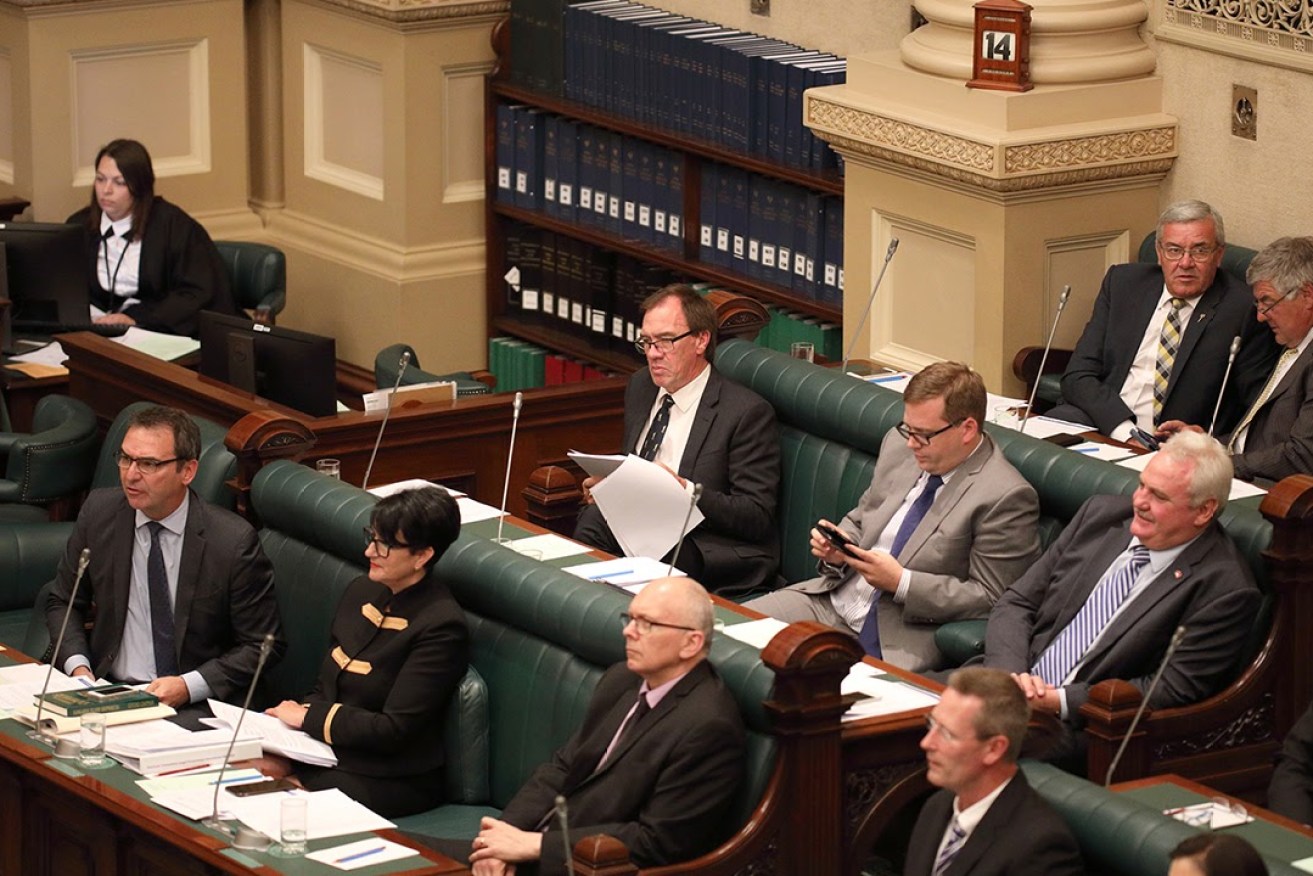
Liberal deputy leader Vickie Chapman surrounded by male colleagues. Photo: Tony Lewis / InDaily
Among a frenzy of questions from the floor, the one that seemed to stop Steven Marshall momentarily in his tracks came not from a political opponent or business lobbyist, but from a Year 12 student from Wilderness School.
Neve Curtis was one of three girls from the school in the audience for Marshall’s address at a lunch hosted by the Committee for Economic Development of Australia last week.
Marshall had his patter down pat for questions about the economy, he was armed with detail about the day’s policy announcement – to establish four new overseas trade offices – and was ready to fire barbs at Labor failure at every turn.
But this one had him stumped: a politically-savvy schoolgirl effectively pondering whether the SA Liberal Party had, as political cliché would have it, a problem with women.
Not that Curtis herself stooped to political cliché.
Instead, she introduced herself and her fellow students as “young women who are passionate about politics”, before asking Marshall: “What’s your stance on the significant under-representation of women in the Liberal Party on both a state and federal basis?”
It’s a question worth pondering.
Of the 20 Liberal members of the state’s House of Assembly, only three are women. One of those, former Opposition Leader Isobel Redmond, will retire at the state election; the Liberal candidate seeking to replace her in Heysen is lawyer Josh Teague.
In the Upper House, only two of the party’s eight members are women.
That still eclipses Labor in the Legislative Council, where only one of the Government’s members is female – the retiring Gail Gago.
But Labor – with its aspirational quota – boasts a more equal record in the lower house, with women comprising nine of 23 ALP MPs (it was 10 of 24 before Frances Bedford quit the party – after being ousted from her Florey electorate by Jack Snelling).
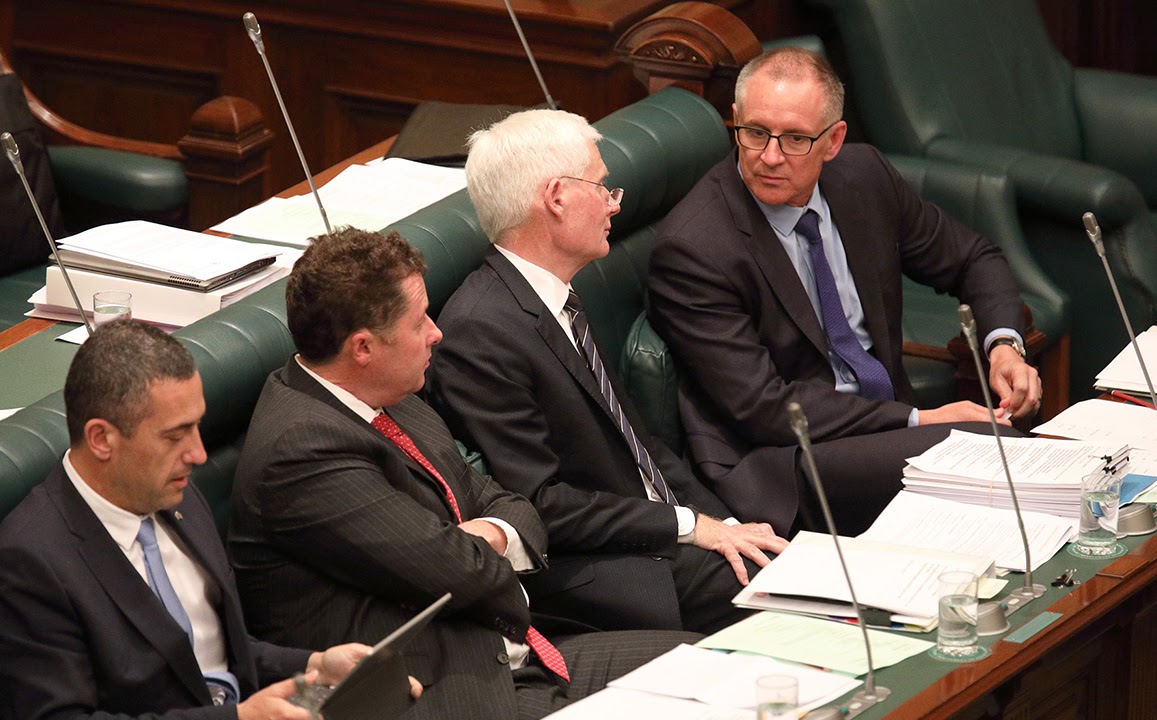
Labor has more women in parliament – but none in senior leadership positions. Photo: Tony Lewis / InDaily
In light of all that, Marshall could do little but concede that the numbers don’t look good.
“It’s factual,” he told InDaily later of the schoolgirls’ concern.
“They’re stating the facts.
“But these things don’t correct themselves overnight.”
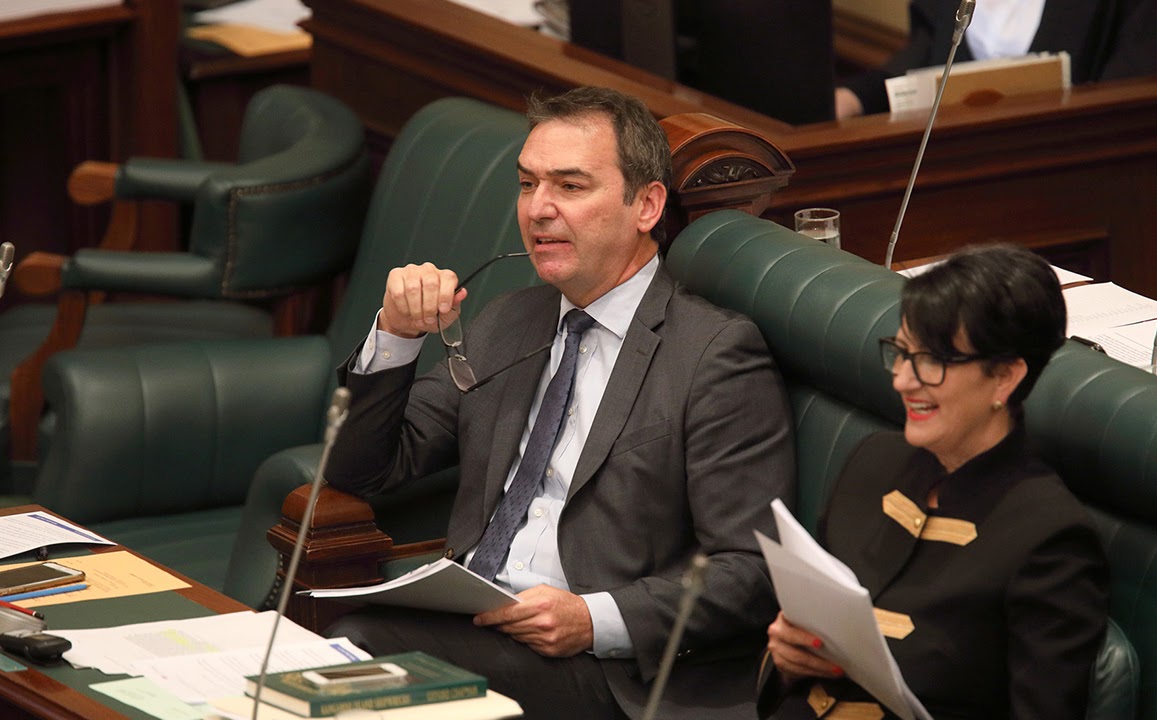
Marshall and Chapman in parliament. Photo: Tony Lewis / InDaily
He told the luncheon that “we do need to attract more women into parliament”, but added that the Liberals wanted not just a better gender balance, but to see “all sectors of our society represented”.
“Vocational background, age… these things are all very important [and] I’m very proud when I look at the candidates who have thrown their hat in the ring [for the 2018 election], there’s far more of that diversity than we’ve had in the past,” Marshall said.
Of the 19 new candidates lately chosen to represent the Liberal Party next March, the men outnumber the women 14 to five.
Marshall was quick to insist that they are all in “very winnable seats” – namely Frome, Elder, King, Torrens and Light – but given the party has thus far only preselected candidates in Liberal-held electorates and Labor marginals, the same can be said for the 14 male candidates as well.
Those candidates were elected by local colleges, who chose from a total pool of 41 male and 16 female hopefuls – which suggests not merely that women are not being chosen for parliamentary positions, but are not nominating in droves either.
Marshall points out “there’s still preselections to be determined”, but these are for seats unlikely to fall his party’s way.
“We do need to be more progressive as a party in SA,” he said.
“We want to attract more women – but not just women… other areas of representation as well.
“We have resisted quotas in the SA division, but it doesn’t stop us from really targeting great female candidates to run for us at the election… and we look forward to stronger representation at the next election, and the one after that.”
He told InDaily that “sometimes these things don’t transform overnight”, but pointed out that the Liberals “have a deputy leader in both the upper and lower house, who are female role models”.
“[Legislative Council deputy Liberal leader] Michelle Lensink continuing to work post the birth of her son Mitchell demonstrates that women of that age can have a positive life in politics, [which is] an inspiration for future generations,” he said.
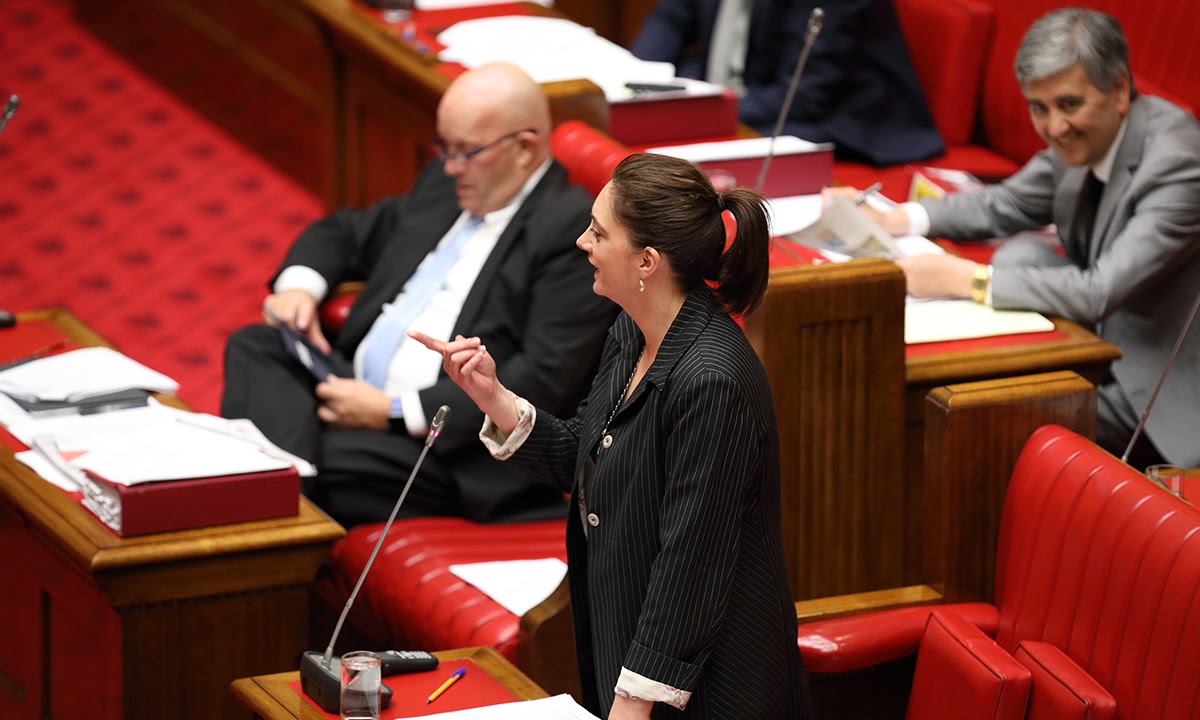
“Inspiration”: Michelle Lensink. Photo: Tony Lewis / InDaily
Marshall insisted the Labor Party was fundamentally “less representative” of SA society.
“They might have some greater degree of gender representation, but the vast majority come from union or politics backgrounds,” he said, insisting the Opposition has “worked very hard to get quality candidates who are more representative”.
“We’ve got one guy who’s a scientist,” he enthused.
Marshall’s lower house deputy, Vickie Chapman, dismissed the claim of under-representation as a “laughable sort of position”.
Most major parties put women up in marginal seats. Why? Because they’re trusted more and they’re winners
She said the key was that Liberal women were in senior leadership positions, including state director Sascha Meldrum.
It’s a fair point – SA remains the only Australian state yet to have a female Premier. The only woman to lead a major party was Redmond.
“[Labor] don’t have any women in their leadership group,” Chapman noted.
“The last one of any significance was Gail Gago, and she was dumped.
“Our women are in leadership positions [and] we’ve got a string of [female] candidates standing at the next election.
“The point I always make is that whoever’s in government has the highest women representation. Why? Because most major parties put women up in marginal seats. And why? Because they’re trusted more and they’re winners.
“There’s nothing new about that – it’s been happening for 30-odd years.”
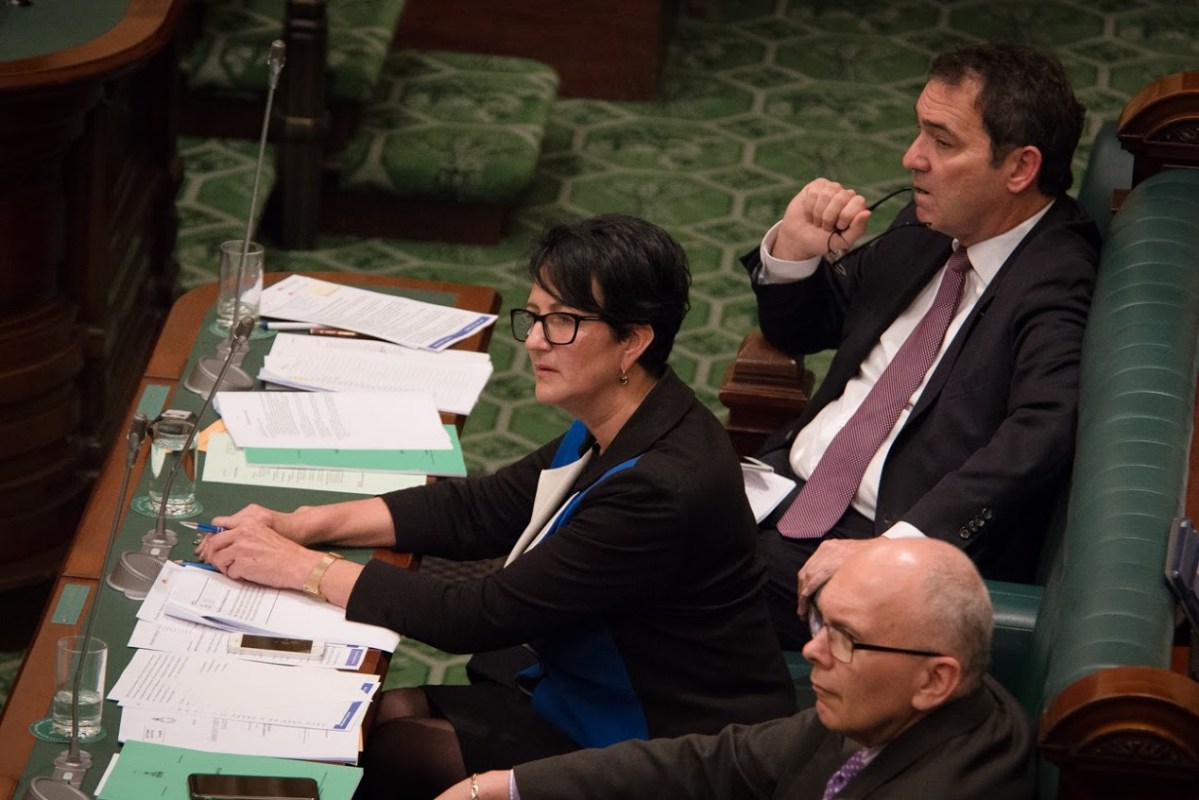
Photo: Nat Rogers / InDaily
It was the Liberal and Country League that gave SA its first female MPs – Jessie Cooper and Joyce Steele in 1959.
Labor didn’t get its first woman into the Lower House until Molly Byrne in 1965, with Anne Levy securing an Upper House berth for the ALP 10 years later.
“We’re proud of our record,” Chapman said.
“The key thing for me is that women are in leadership roles.”
Curtis and her fellow students at the CEDA event, Reshma Berggren and Laura Hanlon, told InDaily they favoured a quota for women in parliament.
Berggren said a quota would be “a good short-term measure to engender that type of thinking about the issue”.
“After a while that can be phased out,” she said.
Hanlon said the question “comes back to having these opportunities” available.
“We need our best brains in parliament…to have people shut out from that industry, I think is harmful,” she said.
Frances Bedford – an active advocate for the Muriel Matters Society, commemorating the famous South Australian suffragette – says the Wilderness students’ Liberal critique rings true, but argues women remain under-represented in parliament more broadly.
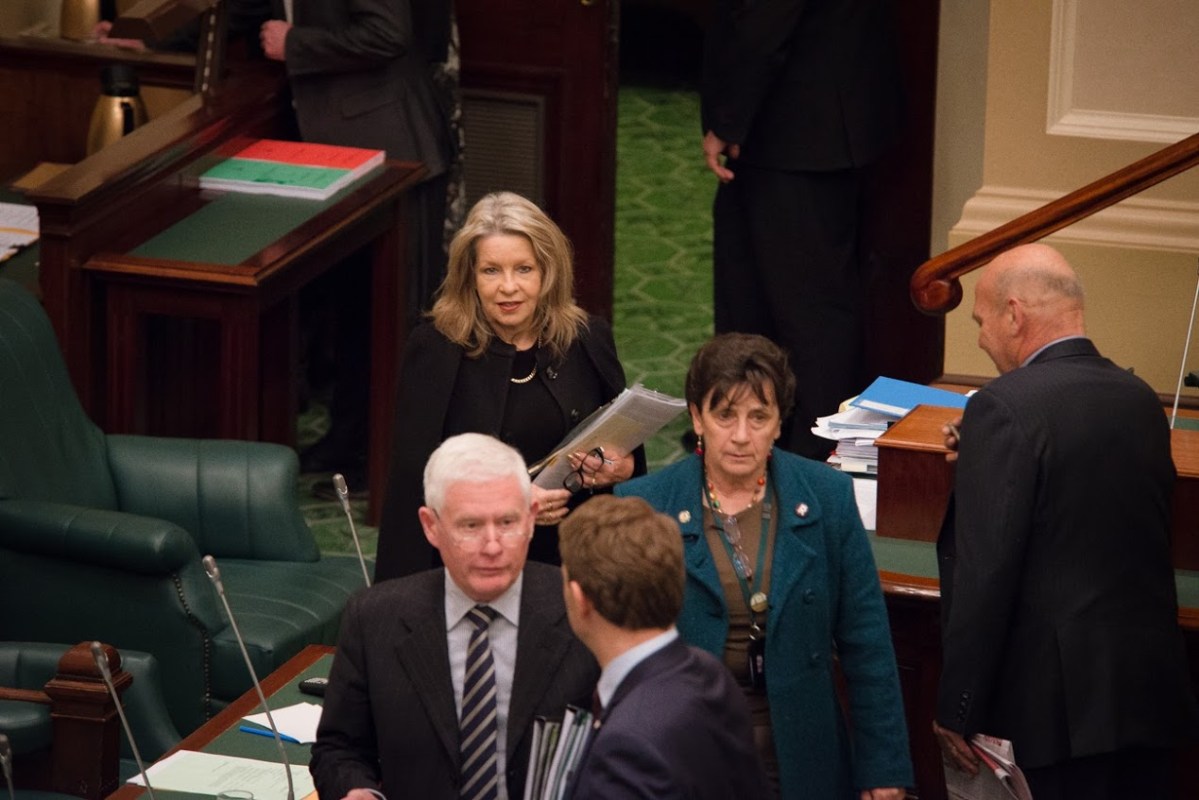
Frances Bedford and Dana Wortley with the throng at the start of Question Time.
“We have to make sure all women – including Aboriginal women – get an opportunity to represent their communities,” she said.
“As my old friend the late Joan Kirner used to say: ‘When parliament is full of mediocre women, you’ll know you have true equality’.”




